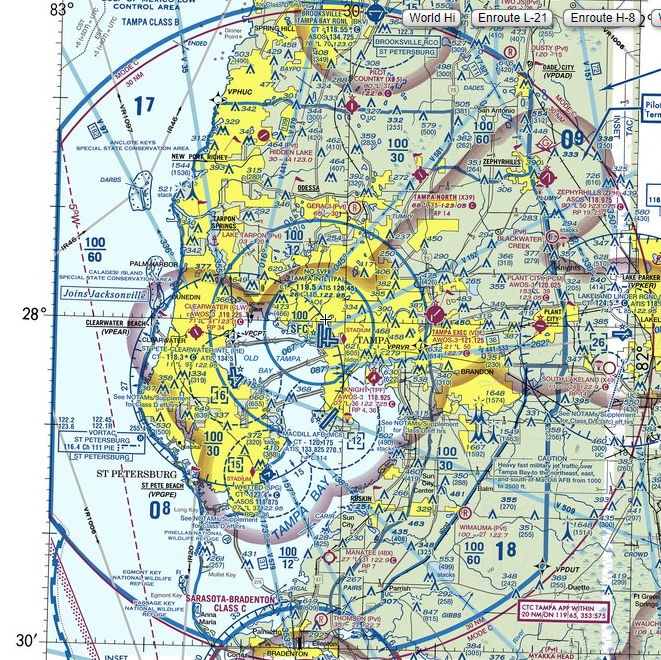Basic Private Pilot Ground School
-
Lesson 1: Your First Flight6 Topics|1 Quiz
-
Lesson 2: Maneuvers and the Traffic Pattern6 Topics|1 Quiz
-
Lesson 3: Understanding the Wind and Turns6 Topics|1 Quiz
-
Lesson 4: AOA, Stalls, and Other Scary Things5 Topics|1 Quiz
-
Lesson 5: Ground Reference, Maneuvers, and FARs4 Topics|1 Quiz
-
Lesson 6: Building Good Landings5 Topics|1 Quiz
-
Lesson 7: The Less Busy Airspace: G, E, D3 Topics|1 Quiz
-
Lesson 8: Class A, B, and C Airspace: The Busier Side of the Sky4 Topics|1 Quiz
-
Lesson 9: Flying Blind and Performance Calculations4 Topics|1 Quiz
-
Lesson 10: Soft and Short Field T.O.'s + Landings4 Topics|1 Quiz
-
Lesson 11: Start Your Engines: Engines, Systems, and Instruments6 Topics|1 Quiz
-
Lesson 12: Weight and Balance, Navigation Systems4 Topics|1 Quiz
-
Lesson 13: Luck with Weather6 Topics|1 Quiz
-
Lesson 14: Your First SOLO!2 Topics|1 Quiz
-
Lesson 15: VFR Charts and Navigation5 Topics|1 Quiz
-
Lesson 16: Weather Charts and Services6 Topics|1 Quiz
-
Lesson 17: Aeromedical Factors, ADM, FARS5 Topics|1 Quiz
-
Lesson 18: Flying at Night3 Topics|1 Quiz
-
Lesson 19: Cross Country Flight Planning4 Topics|1 Quiz
-
Lesson 20: Test Prep5 Topics|2 Quizzes
Class B Airspace
Class B, the busy stuff
To make sense of this complicated cake, let’s build it from the ground up!
At a Class B airport, you have Ground Control, just like you would at a Class C or Class D airport. Ground control issues taxi clearances.
You have Tower Control, same as any other towered airport. The tower will issue takeoff and landing clearances.
Just after takeoff Tower will pass you over to Departure Control. Departure control and Approach control are the exact same thing. We just call the ATC controller we are talking to Departure when we are taking off and leaving, and Approach when we are approaching the airport to land. If you are intending to land at a Class B airport, you will probably start talking with Approach control a good 30-40 miles from the airport.
The Shape of the Cake
What’s all this talk about cake? If it’s making you hungry, feel free to take a short break and go eat a slice of cake, if you don’t have any cake handy in the fridge right now, then stay seated with your seatbelt fastened and continue studying.
We often refer to the design and shape of Class B airspace as an “upside down wedding cake”. The reason is the way Class B airspace is designed is in layers, that progressively get wider the higher up from the surface you go. Of course at the surface and at the center of the “cake” you will find the primary Class B airport (and lots of people and planes there too!). The diagram below gives you a nice side view of what Class B airspace looks like from the side.
The shape of each Class B airport’s airspace is unique to that individual airport. Experts get together and decide how many, and where the layers should be to best protect arrivals and departures at the busy Class B airport, all while keeping as much airspace free and open as possible to mitigate encroaching on any other airports or any other areas you want to fly in. Often you will find the “layers” start and end along identifiable landmarks such as shorelines, interstates, or railroads, all to help VFR pilots have clear “boundary” lines of where they can and cannot go given the altitude they are flying at. For example, look at the KTPA Class B airspace below and see how the boundary lines are drawn using the shoreline as a reference and the interstate as a reference for some of the layers. Other boundary lines are simply based off of distance from the center of the Class B airport.
Note: Be careful not to confuse the light blue lines of victor airways with the light blue lines of Class B airspace boundaries.

The Rules:
A few random rules about Class B airspace you should REMEMBER:
- The top is between 7,000′-12,500′ msl
- Speed limit of 200knots IAS below a shelf or “floor” of Class B and also 200kts limit when flying through a VFR corridor
- Mode C veil is 30nm radius of the Class B airport (where you are required to have a mode C transponder regardless of altitude)
- Need a specific clearance to enter Class B airspace, not just two-way radio communication.
When Should I ask to Enter?
Well if you plan to fly through Class B, C, or D airspace, it’s best to let the controller know as soon as practical where you are and what you plan to do (fly through their airspace en route to XYZ airport for example). This means for us in GA airplanes contacting most controllers at least 10nm prior to entering the airspace is a good practice (although you do not legally have to contact them until just prior to entry). You will probably get radio reception 30-50nm from the primary airport who’s airspace you intend to fly into, so if you’ve got nothing else better going on in the cockpit you might as well give them a call once you hear that your radio is in range.
